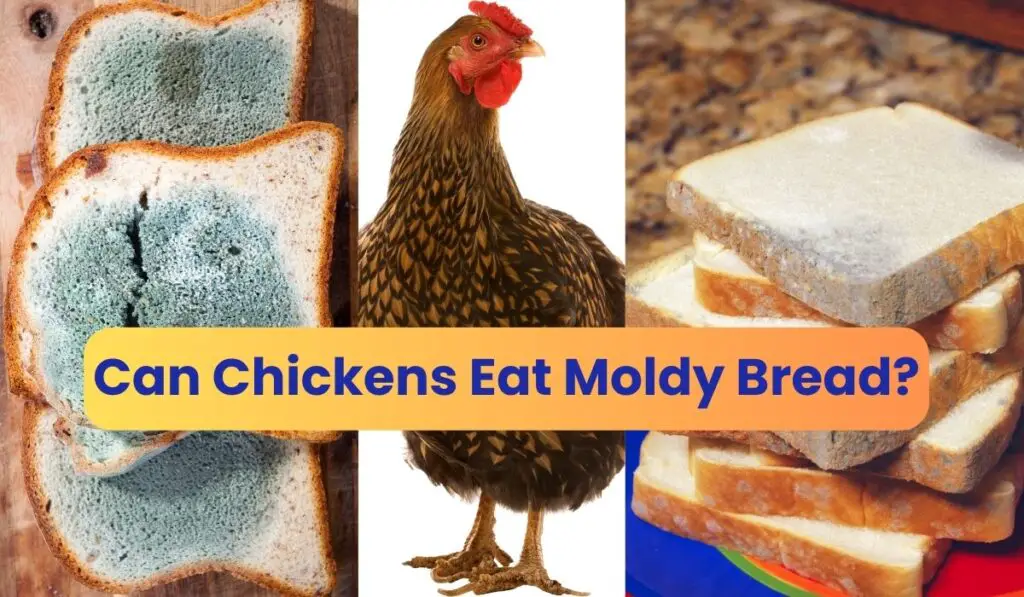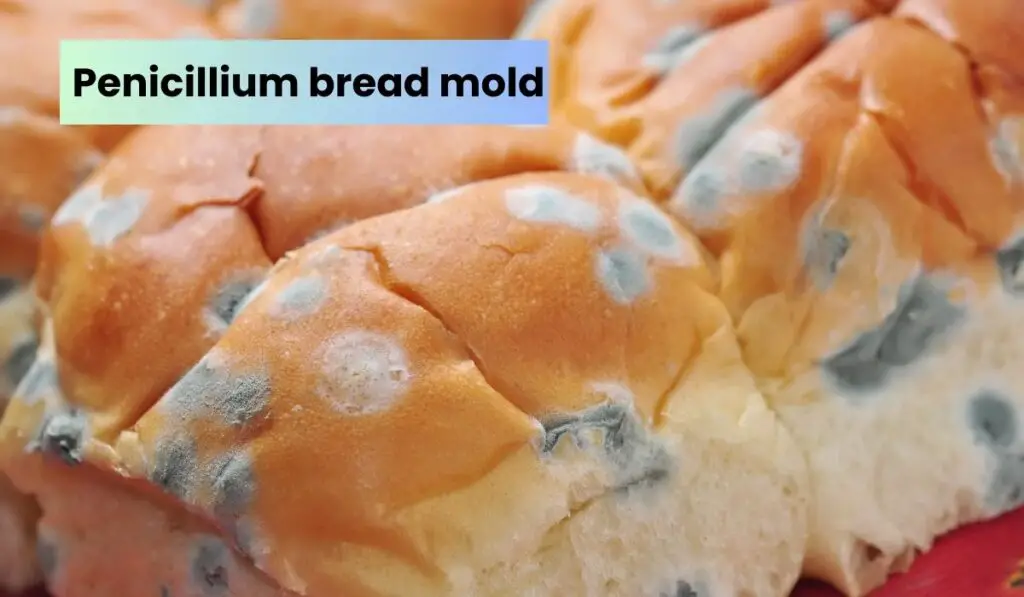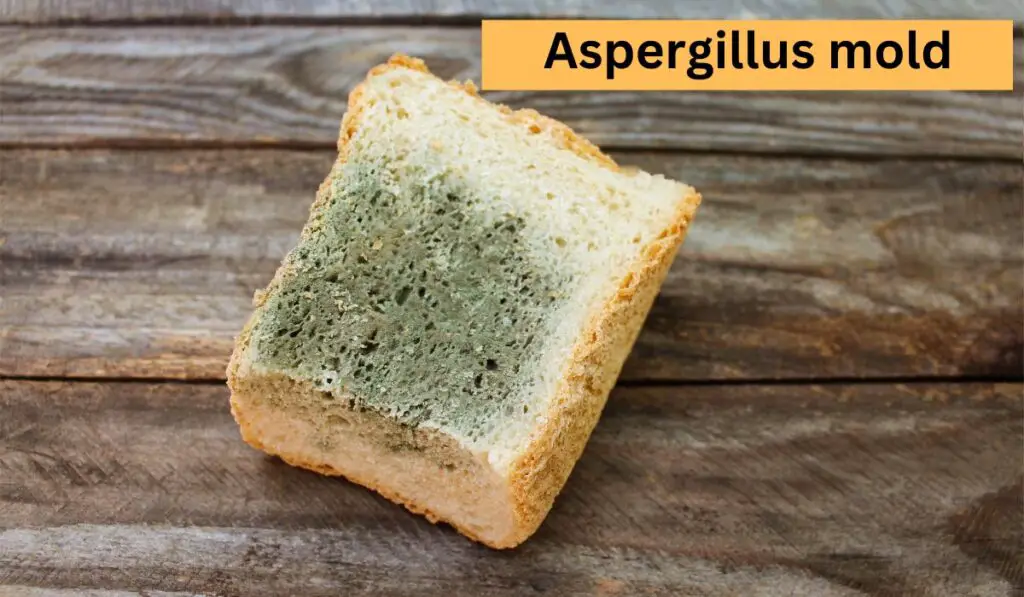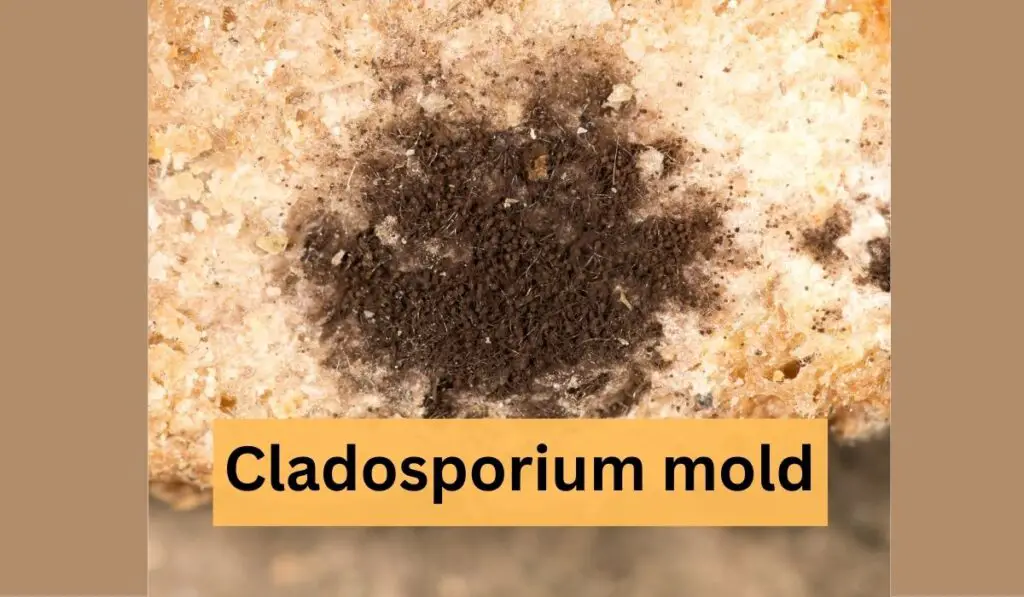
My chickens pals are incredibly picky and used to enjoy eating grains, table scraps, fruits, and vegetables like other birds. All day long, these two-legged omnivores don’t stop munching on food. When they argue with each other, they make noise and are pretty amiable. I take considerable effort to ensure that my birds are eating correctly. Regarding your chickens’ health, you ought to take extra care.
Today we’ll look at moldy bread, which I frequently throw away. But will my chickens eat the stale bread? What happens if your chicken eats moldy bread? Is it okay to give moldy bread to chickens?
Stay with us until the end of this post if you want to discover more valuable facts.
What Exactly Is Molded Bread?
Mold is a fungus that thrives on bread by breaking it down and extracting nutrients. Through the colonies of spores, the fungus produces spores on the fuzzy surface of the bread. The spores spread through the air on the entire surface of the bread. The mold comes in a variety of shapes and colors.
Can Chickens Eat Bread With Mold on It?
Feeding moldy bread to chickens is never a good idea. Although stale bread does not poison your chickens, it can lead to many ailments. As a poultry owner, you need to take extra precautions before feeding anything to your feathery friends since, as you are aware, hens are more likely than humans to catch food-borne illnesses. Never give your hens stuff that you wouldn’t eat for yourself. Therefore, don’t feed moldy bread to your backyard chickens.
There Are Three Ways to Check for Mold on Bread Before Feeding It to Chickens
You should be aware that hens occasionally prefer bread as a treat. Before giving the bread to your finicky birds, you would need to inspect it. Here are some hints for determining whether the bread is moldy.
• Look at the bread’s surface
If you look closely, the surface of bread has some spores and a fuzzy texture, just like the colors black, blue, white, green, and grey. If so, this is a symptom that the bread has fungus developing inside it. When this occurs, it indicates that the bread is moldy. Therefore, dispose of it quickly in the kitchen trash can. You should need that; keep this stale bread away from your child and other family members. This moldy bread is only suitable for chickens if it is safe for humans.
• By smelling the bread
The second step is to smell the bread; if it smells sour and has an alcohol or vinegary odor, that is also a clue that the bread is moldy. As an additional precaution, people with allergies should never smell moldy bread since the smell can make them sick. Therefore, never serve your fowl companions this stale, moldy bread.
• slicing the bread
To determine whether mold is inside the bread, you can chop it up and inspect it. If mold is present, avoid giving it to your chickens.
4 different molds can grow on bread
Various kinds of mold grow on the moldy bread. You must verify these criteria to know what type of mold is growing on the observations.
- Be aware of the texture
- Make sure the color is right
- It’ll be clear what size it is
Knowing what to inspect makes determining the sort of bread mold simple. The second key fact is that mold spreads throughout the entire loaf of bread because it has roots inside it that are deeper and denser than the surface it covers.
Although there are many distinct kinds of mold, let’s first discuss the types that develop on bread most frequently.
• Penicillium bread mold

The most prevalent mold, penicillium, can be found on bread and in various fruits and vegetables. The bread leaves white, light blue, and dark grey spots on the top. There is a similarity between these spots and bread patches. The majority of the time, it grows in cool temperate areas. Therefore, even after placing the bread in the refrigerator, this will continue to grow on the bread’s surface.
• Black bread mold

Rhizopus stolonifera is the alternate name for this black bread mold. The most typical moldy bread is of this type. It initially gives off the impression of fuzzily colored areas of green and blue but later turns dark. That is why the mold is called black bread mold.
• Aspergillus mold

This mold is hazardous because it makes hens sick with aspergillosis. A respiratory condition occurred due to this. It will also turn lethal for your chickens if you do not cure the sickness. Here is a list of symptoms your chicken may experience if they eat moldy bread containing Aspergillus mold:
Sneezing, wheezing, a chicken-like feeling, trouble breathing, and loss of appetite.
If your chicken displays these symptoms, visit the veterinarian immediately for effective treatment.
• Bread containing Cladosporium mold

On the bread’s surface, dark green to black spots appear. The texture is silky, and the smell is potent. It’s terrible for chickens to have this kind of mold.
What Happens if Hens Eat Bread That Has Mold on It?
The mycotoxins, which the mold generates, are harmful compounds. Mycotoxicosis is a condition caused by various dangerous poisons entering chicken bodies. Several ailments will affect your chicken if it contracts mycotoxicosis, including:
- Diarrhea and vomiting are possible
- Weight losing
- Egg production is down
- Paralysis could occur in a chicken
- The combs’ and shanks’ smoothness
Early detection of this virus in your chicken’s body provides a chance for a successful treatment. But this illness will turn lethal for your chickens if you do not treat it. Then a chronic condition like that:
- Liver or renal disease also appears
- They have reduced nutritional absorption
- Anemia
- Respiratory problems
- Nervous system problems
- Losing weight
- Reduction in egg production
- Birth flaws
- The eggshell is of poor quality
There is also a chance that other diseases will develop in your chicken body’s system.
Signs That Your Chicken Can Consume the Moldy Bread
Chickens, as you well know, devour anything, including moldy bread, so they do not stop their beaks from doing so. If your chicken can consume stale bread, you should be mindful of this indicator of bread eating.
First, your chicken can quit eating anything and doesn’t seem to want to eat its favorite delicacy. It signals that your bird is ready to consume the stale bread. When chickens get sick, this is a typical symptom observed. That makes it evident that your bird companion is in distress.
Second, consult your poultry veterinarian if your chicken behaves unexpectedly after consuming the moldy bread. When they are ill, chickens get sluggish and lethargic. Additionally, they feel restless and idle. These could be symptoms of a disease. If they eat moldy bread, the chickens also vomit and develop diarrhea.
Final Words
Therefore, we concluded you should protect your chickens’ lives by avoiding moldy bread. However, if it’s just a one-time thing, you could serve your chicken some fresh bread. However, never give your flock stale bread to eat because, as a chicken owner, you should never want your chickens to become unwell. Both hens and people should avoid rotting bread. Your chickens will get strong and healthy if you constantly feed them fresh food.
If you believe your chicken ate moldy bread, what steps should you take?
If you have any questions, these indications show that your chicken lacks a well and consumes moldy bread and anything beaded. To keep your chicken from dying, it would be beneficial if you took rapid action. As a result of this mold, your chicken will likewise kill. So always keep an eye on the chickens in your backyard.
Which foods are prone to mold growth?
High acidity and moisture foods are conducive to the growth of mold. As you are likely aware, since many fruits and vegetables are made of water, the fungus is more likely to spread quickly on them. Mold can grow on various foods, including tomatoes, bread, peaches, mushrooms, salt pork, plums, apricots, and cheese.
Is moldy bread okay for baby chicks to eat?
Eating moldy bread for baby chicks is a mistake you should never make. Both hens in their adult and early stages are at risk. Unfortunately, if you’re not around when the baby chick eats the moldy bread, it’ll probably get sick and possibly even die. They have delicate digestive systems and can’t process foods containing poisonous ingredients.

